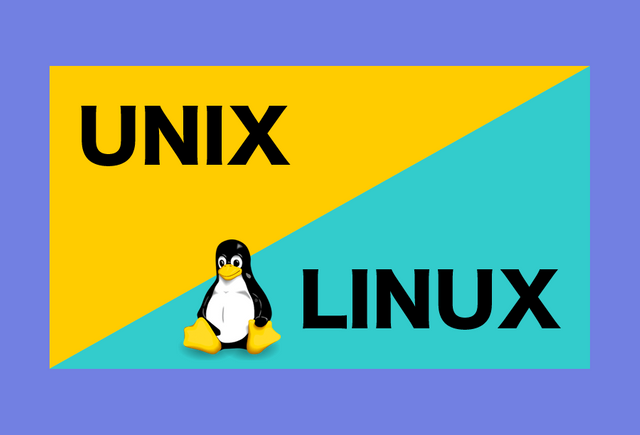History of Unix and Linux

Let's dive deep into the history of unix and linux, the most revolutionary OSes of all time.
Unix History:
Unix is a computer operating system developed in 1969 by a group of AT&T employees at Bell Labs, including Ken Thosmpos, Dennis Ritchie, Brian Kernighan, Douglas McIlroy and Joe Ossanna.
In 1965 AT&T bell Labs,MIT and General Electric developed operating system called MULTICS (Multiplexed Information and Computing System).Bell Labs dropped out of the Multics project in April 1969.AT & T employee Ken Thompson and Dennis Ritchie lead an OS team and continued to work on the same project and developed UNICS (Uniplexed Information and Computing System). Later on it was named UNIX.
In 1973 Unix was written in C.Soon more than 600 companies started using UNIX.AT&T made Unix available to universities and commercial firms, as well as the United States government under licenses. The licenses included all source code including the machine-dependent parts of the kernel.Soon other companies began to offer commercial versions of UNIX.
Some of the companeis and their unix flavours which exist today also are: Sun SunOS Microsoft Xenix Santa Cruz Operation (SCO) SCO Unix HP HPUX IBM AIX Berkley BSD Cray Research UNICOS Silicon Graphics IRIX Apple MacOsX SUN Solaris.
Linux History:
Linux is a free Unix-like operating system kernel created by Linus Torvalds and released under the GNU General Public License.Linux is an open-source version of the UNIX operating system. Actually we should call it GNU Linux rather than just Linux.
Linux is the kernel, one of the essential major components of the system. But as this is the first article for those who want to know more about Linux,we will time being call it just Linux. Linux is a generic term referring to Unix-like graphical user interface (GUI) based computer operating systems based on the Linux kernel.Linux is freely-distributable implementation of UNIX that runs on a number of hardware platforms, including Intel and Motorola microprocessors.
Linux has a reputation as a very efficient and fast-performing system. Linux was invented by Linus Torvalds in 1991, when Torvalds was a student at the University of Helsinki in Finland.Linux derived Linux form MINIX, a non-free Unix-like system.MINIX (from “mini-Unix”) was first released in 1987, with its complete source code made available to universities for study in courses and research. It has been free and open source software since it was re-licensed under the BSD license in April 2000.
While studying Linus began writing his own kernel. He started by developing device drivers and hard-drive access, and by September had a basic design that he called Version 0.01. This kernel, which is called Linux, was afterwards combined with the GNU system to produce a complete free operating system. On October 5th, 1991, Torvalds sent a posting to the comp.os.minix newsgroup announcing the release of Version 0.02, a basic version that still needed Minix to operate, but which attracted considerable interest nevertheless. The kernel was then rapidly improved by Torvalds and a growing number of volunteers communicating over the Internet, and by December 19th a functional, stand-alone Unix-like Linux system was released as Version 0.11.
On January 5, 1992, Linux Version 0.12 was released, an improved, stable kernel. The next release was called Version 0.95, to reflect the fact that it was becoming a full-featured system. After that Linux became an underground phenomenon, with a growing group of distributed programmers that continue to debug, develop, and enhance the source code baseline to this day. Torvalds released Version 0.11 under a free-ware license of his own devising, but then released Version 0.12 under the well established GNU General Public License. More and more free software was created for Linux over the next several years.Linux continued to be improved through the 1990’s, and started to be used in large-scale applications like web hosting, networking, and database serving, proving ready for production use. Version 2.2, a major update to the Linux kernel, was officially released in January 1999. By the year 2000, most computer companies supported Linux in one way or another, recognizing a common standard that could finally reunify the fractured world of the Unix Wars.
The next major release was V2.4 in January 2001, providing (among other improvements) compatibility with the upcoming generations of Intel’s 64-bit Itanium computer processors.Although Torvalds continued to function as the Linux kernel release manager, he avoided work at any of the many companies involved with Linux in order to avoid showing favouritism to any particular organization, and instead went to work for a company called Transmeta and helped develop mobile computing solutions, and made his home at the Open Source Development Labs (OSDL), which merged into The Linux Foundation.
Linux Torvald’s posting to the comp.os.minix newsgroup
"Hello everybody out there using minix – I’m doing a (free) operating system(just a hobby, won’t be big and professional like gnu) for 386(486) AT clones… I’d like to know what features most people would want. Any suggestions are welcome,but I won’t promise I’ll implement them :-) – Linus Torvalds; Posting to comp.os.minix; 25 Aug. 1991."
Posted from my blog with SteemPress : https://www.golibrary.co/history-of-unix-and-linux/
Hi! I am a robot. I just upvoted you! I found similar content that readers might be interested in:
https://livinginternet.com/i/iw_unix_gnulinux.htm
According to the Bible, Graven Images: Should You Worship These According to the Bible?
Watch the Video below to know the Answer...
(Sorry for sending this comment. We are not looking for our self profit, our intentions is to preach the words of God in any means possible.)
Comment what you understand of our Youtube Video to receive our full votes. We have 30,000 #SteemPower. It's our little way to Thank you, our beloved friend.
Check our Discord Chat
Join our Official Community: https://steemit.com/created/hive-182074